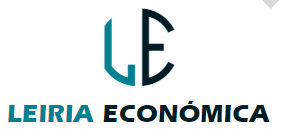Artificial intelligence is already present in many imaging devices and its presence will increase in the very near future. It offers two main applications in medical imaging, including automating, making reliable, and accelerating image analysis (MRI, mammogram, PET scanner, etc.). This can be done in several ways, starting with “the use of artificial intelligence algorithms that make it possible to automatically detect anomalies in the images obtained,” explains Dr. Irene Bovat. This facilitates rapid sorting between normal images and pathological images that require urgent radiological expertise to determine whether the patient has cancer.
The use of AI algorithms also includes automatically making measurements on tumor images (size or shape characterization). Currently, radiologists or nuclear doctors perform these measurements manually, which is time-consuming and sometimes practitioners do not agree. Artificial intelligence helps automate and accelerate these processes. The specialist adds: “This reduces the discrepancy between medical centers and observers.” This is especially useful in centers with limited resources and receiving a small number of patients. »
Even in the near future, algorithms could generate an initial imaging report, facilitating the work of radiologists or nuclear doctors who would then only have to check and complete the report. This automation process is underway and gradually spreading in French medical services.
Artificial intelligence makes photos “talk”
The second part of the advance in using AI is making better use of the information in images. “Currently, we mainly measure the size, the largest dimension of the tumors, as well as the signal (contrast) level, which allows us to roughly characterize anomalies,” explains Irene Bovat. However, artificial intelligence algorithms provide the possibility of measuring a large number of information, up to hundreds of indicators extracted from radiological images, which is called “radiology”. »
But the issue is not limited to simple measurement of these indicators. They still need to be exploited. Here again, the machine can work better than the human brain. In fact, the latter has difficulty analyzing more than four factors simultaneously. How about twenty or even dozens! This is where artificial intelligence algorithms come into play. They can identify the best combinations of parameters and thus be able, for example, to predict response to treatment and the way it affects patients' prognosis, or even predict cardiotoxicity associated with breast irradiation. For more personalized treatment strategies for each patient.
In addition, these algorithms are used to better understand tumors, for example based on their molecular characteristics. The goal of researchers in the coming years is to determine tumor phenotypes (set of characteristics) from precise images, especially in 3D imaging (MRI, scanner) that complement histopathological analyzes (tissue analysis). And then, but not limited to, understanding treatment resistance with immunotherapy.
Learn more: The IHU Gynecological Cancer Institute is a project that brings together the Institut Curie, the University of Sciences and Letters Paris and Inserem, for the comprehensive care of women with breast and gynecological cancer.
